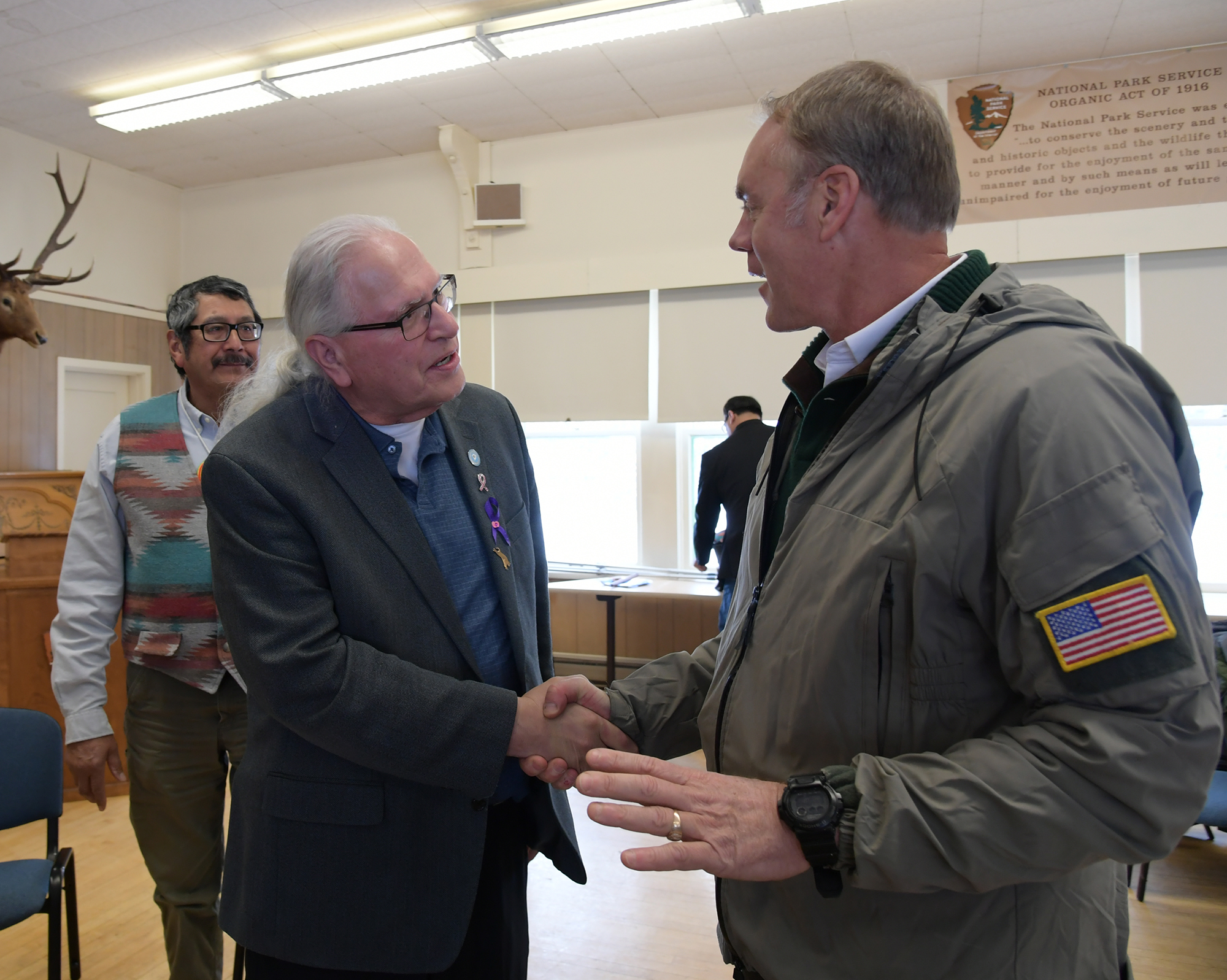
The Trump administration's changes -- described by another official as "significant" -- reflect those concerns. For example, the department plans to target mineral interests with "no current economically viable mineral value." And to prevent landowners from receiving seemingly large payouts, the department will target interests where an individual Indian holds less than than 25 percent in both the mineral and surface rights. During the hearing in May, Cason was eager to highlight a situation where $1.63 million was spent to acquire about 3 acres from just 2 individuals in southern California. Additionally, the department plans to prioritize interests where a tribe, or even an individual Indian, is willing to contribute their own funds to consolidate land holdings. That's a major departure from one of the goals of the program, which was designed to address more than a century of setbacks that arose as a result of the disastrous allotment era. "Well it's not necessarily free money," Rep. Norma Torres (D-California), the top Democrat on the House subcommittee, told Cason in May. "Remember they were the original owners of this land that was taken from them, pillaged from them." The $3.4 billion settlement to the Cobell trust fund lawsuit included $1.9 billion for land consolidation. Through the program, individual Indians receive offers for their fractional, or small, interests but they are not required to accept. Any interests that are acquired are restored to tribes, the original owners of the land. The Obama administration expended more than $1.1 billion of the fund through early January. Additional offers that went out before the announced changes boosted the figure to about $1.2 billion. “As someone who has been involved with this program since its inception, this significant policy shift announced today is responsive to the tribal feedback we have received over the past several years,” said Mike Black, a citizen of the Oglala Sioux Tribe who serves as the "acting" Assistant Secretary for Indian Affairs. The Trump administration's Land Buy-Back implementation list follows, with stars denoting reservations where offers were made during the Obama years. Double stars represent reservations in Secretary Zinke's home state that also saw offers during the Obama era:
- Blackfeet (Montana) **
- Bois Forte (Minnesota)
- Cheyenne and Arapaho (Oklahoma)
- Cheyenne River (South Dakota) *
- Crow (Montana) **
- Fond du Lac (Minnesota) *
- Fort Belknap (Montana) **
- Fort Berthold (North Dakota)
- Fort Peck (Montana) **
- Navajo (Arizona, New Mexico, Utah) *
- Northern Cheyenne (Montana) **
- Pine Ridge (South Dakota) *
- Rosebud (South Dakota) *
- Santee Sioux (Nebraska)
- Skokomish (Washington)
- Spirit Lake (North Dakota)
- Standing Rock (North and South Dakota) *
- Umatilla (Oregon) *
- Warm Springs (Oregon)
- Wind River (Wyoming)
2016 Status Report: Land Buy-Back Program for Tribal Nations (November 2016)
Join the Conversation
Related Stories
Bad
River Band benefits from Land Buy-Back Program for Tribal Nations (July 13,
2017) Interior Department sends out another $13.1M in Cobell buy-back offers (June 26, 2017)
Cobell buy-back program keeps on rolling toward eventual end (June 6, 2017)
Colville Tribes worried about future of Cobell buy-back program (May 31, 2017)
Yakama Nation landowners weigh offers as Cobell buy-back winds down (May 25, 2017)
Trump administration ready to let Cobell program run out of funds (May 24, 2017)
Landowners on two reservations in Nebraska receive Cobell buy-back offers (May 22, 2017)
House panel sets hearing on future of Cobell buy-back program (May 16, 2017)
Yakama Nation landowners see $68M in Cobell buy-back offers (April 24, 2017)
Interior Department makes 'final' transfer for Cobell scholarships (April 13, 2017)
Cobell buy-back program on path to run out of funds under Trump (March 30, 2017)

